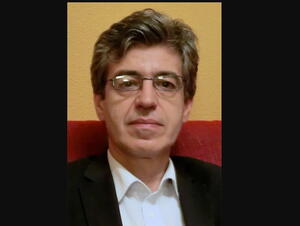The 14th meeting of the Science and Technology Advisory Committee (STAC) took place recently at the ITER Headquarters, from 14-16 May. We had the honour to be the first ITER Council subcommittee that met at the impressive Council chamber after it was inaugurated by the ITER Council last November.
The STAC advises the ITER Council on two areas: the monitoring of ongoing project activity and the assessment of new proposals which imply a change in the ITER Baseline. The work at every meeting is based on the "STAC charges" adopted by the ITER Council. We assess the input from the ITER Organization that replies to recommendations made by the STAC and answers questions implied in the STAC charges.
The preparation of each STAC meeting involves an important work load on key ITER Organization staff and, as Chair of the STAC, I am aware that we must be careful with the amount of work that our requirements put on ITER Organization resources. I must also recognize the high overall quality of the reports and presentations delivered to our committee.
One of the first agenda points since I have participated in the STAC is the review of the project schedule from a technical point of view. Essentially, we analyze the technical causes of delays, including aspects which are midway between the technical and the managerial world such as configuration control, quality control, process control, etc.
As is happened in previous meetings, STAC 14 continued to express its concern about delays in the project. A number of systems are "critical or supercritical," which means that they drive the First Plasma schedule, amongst them buildings, vacuum vessel, the poloidal field coils ... and even the toroidal field coils could come into this category if delays are not stemmed. In addition, the "microschedule" reflected in the milestone achievement index and similar management parameters also indicates delays. However my personal perception, and to some extent that of many STAC members, is that the processes are improving and that the project schedule will soon consolidate. The STAC also acknowledged the organizational efforts and the implementation of recovery plans in order to mitigate the delays.
As I explained during the meeting with the staff in the afternoon of 16 May, my personal view on the delays is that they are not dangerous per se for the project but they undermine our credibility in front of stakeholders and society and this is the actual danger. In order to rebuild credibility our best tool is to keep working hard, as everyone involved is already doing. The ITER project is not only extremely complicated technically, it is also a nuclear project, which adds complexity. It was conceived with a complicated collaborative structure and, unfortunately, an underestimated allocation of resources. The fact that it is effectively progressing and that many components are actually being constructed should encourage all of us.
In addition to the technical analysis of the schedule STAC also looked at deferrals, i.e., procurements which are proposed to be delayed in order to free resources for other items that are needed in earlier phases of the project. We were worried about the deferred implementation of some systems, in particular diagnostics, and we have requested the ITER Organization to make every possible effort to implement those systems in time in order to avoid delays to the deuterium-tritium campaign derived from a slow implementation of the research plan.



